Electric bikes are growing quickly in popularity, with riders enjoying the extra assistance provided by the motor for everything from city riding and commuting by bike, to weekend road rides and trail-centre trips.
However, electric bikes are subject to different laws and regulations than non-assisted bikes.
So what legally constitutes an electric bike, how much assistance can an ebike provide and what are the laws around riding one?
We’re here to answer those questions, starting with the laws in the United Kingdom, which are the same as those in the European Union (at the time of writing), before covering the USA and Australia.
You can also read our buyer’s guide to choosing the best electric bike and our explainer on how electric bikes work. If you already own an ebike, we’ve got advice on electric bike maintenance, to help you keep your machine in top working order.
Are ebikes legal?

Yes, and their use is actively encouraged as a way to get more people riding, get fit and reduce the number of short car journeys made; take a look at our article on the benefits of riding an electric bike.
You can buy a bike equipped with an electric motor across all the main bicycle categories: electric road bikes, electric hybrid bikes with flat bars and electric mountain bikes. You can even buy electric folding bikes, electric gravel bikes and electric cargo bikes. Also check out our guide to the best electric bikes, which explains more about the different types of electric bike available.
There are some regulations covering the speed limit at which they are allowed to provide assistance and their power output, as we'll explain below. However, if an electric bike meets these it's perfectly legal to ride it anywhere you'd ride a normal bike.
You can also buy an electric bike conversion kit to convert a pedal-only bike into an electric bike. Again, if it complies with the power output and speed regulations, this is perfectly legal.
Read our beginner's guide to electric bikes for more details on how an electric bike works.
Which ebikes are illegal?
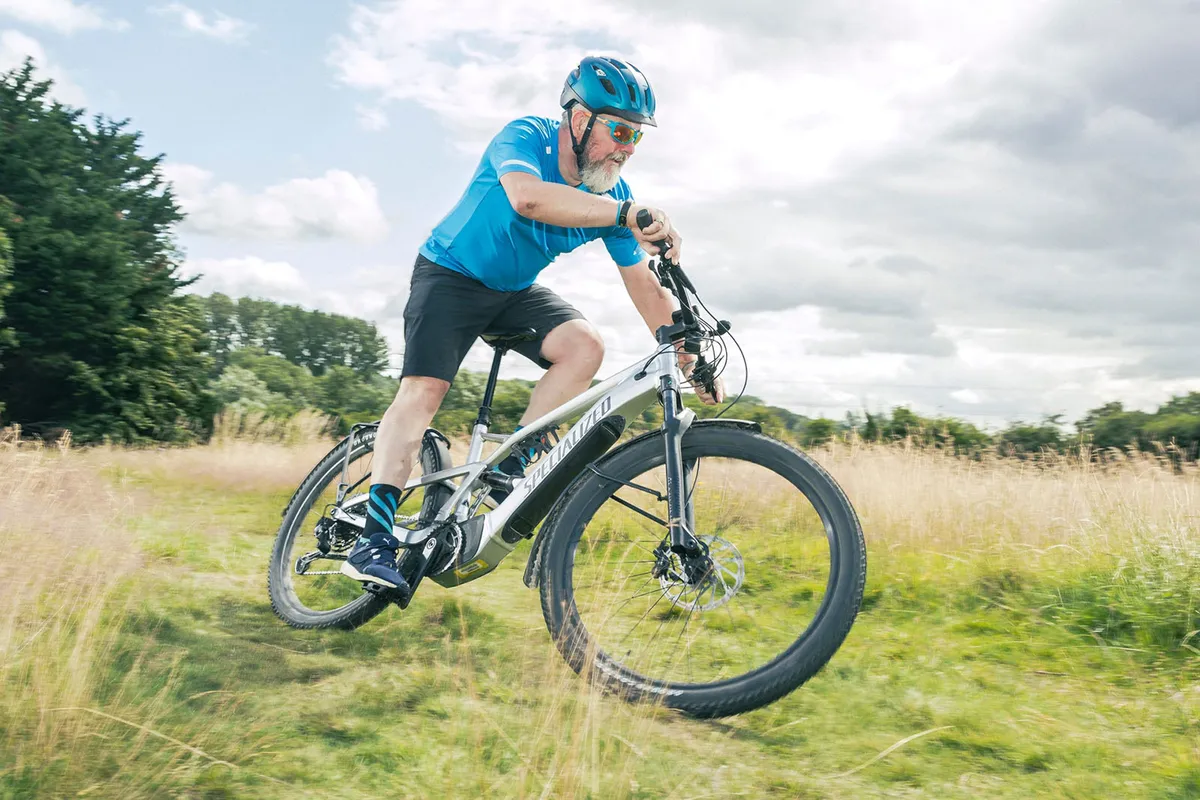
We’ll be dealing first with the laws covering electric bikes in the UK, and that starts with defining what constitutes an ebike, or an electrically assisted pedal cycle (EAPC) to give it its technical name.
Not all electrically powered two-wheeled vehicles are covered by this category – we’ll cover some other types later. Also, an ebike doesn’t have to have two wheels – the legislation also applies to EAPCs with three or more.
Bikes that don't adhere to or exceed EAPC regulations may be classified as electric motorbikes.
What is an EAPC?
According to gov.uk, an EAPC must:
- Have pedals that can be used to propel it
- Show either the power output or the manufacturer of the motor
- Show either the battery’s voltage or the maximum speed of the bike
- Have an electric motor with a maximum power output of 250 watts
- Not have a motor able to propel the bike when it’s travelling at more than 15.5mph
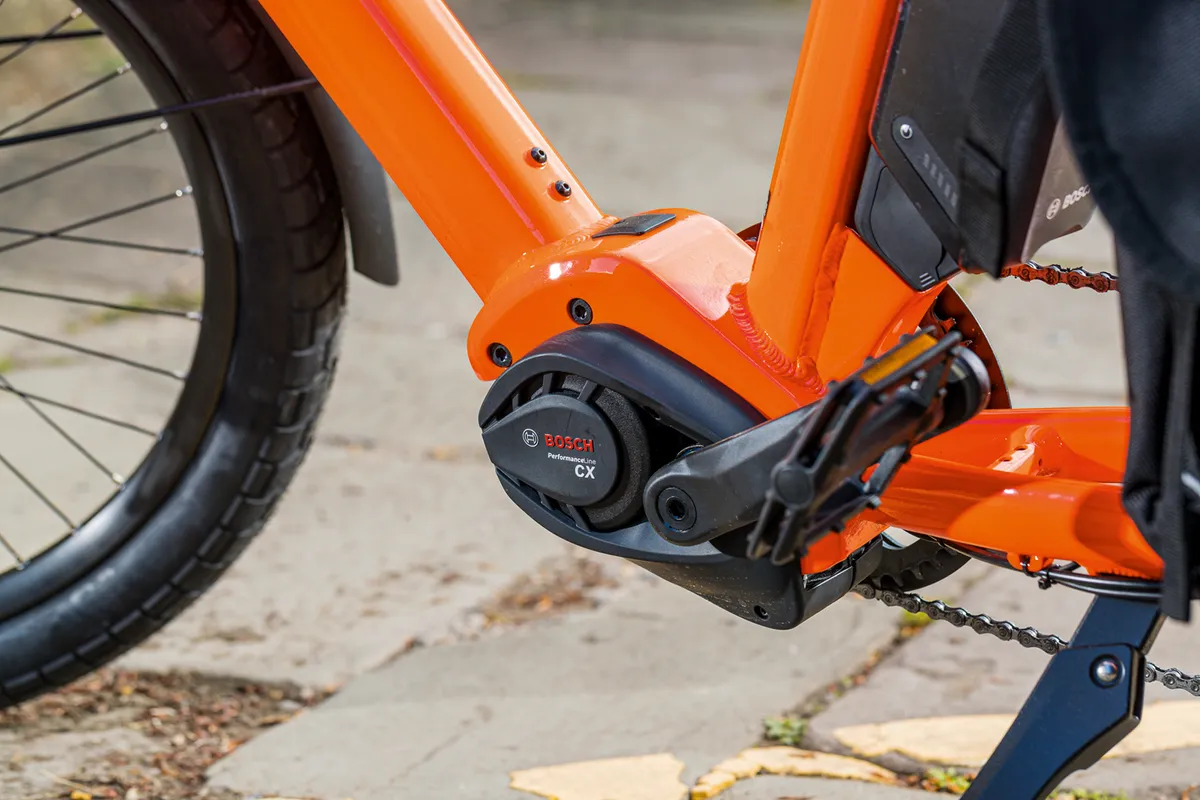
Let’s cover each of those elements in a little more detail.
An EAPC's motor can only provide assistance when the rider is pedalling.
It will have sensors built into the system that recognise when the rider is pushing on the pedals and provide power from the motor in proportion to this, so the bike doesn’t run away with you or power you along without pedalling.
Electric bike laws state that assistance from the motor must cut out at 15.5mph (25km/h). That’s the same across the UK, EU and Australia (but, as we’ll come on to, this limit rises to 20mph in the USA).
You can ride an ebike faster than this, but the motor will cut out and you’ll then be riding solely under your own steam. It’s perfectly possible to exceed 15.5mph when travelling downhill, while a fitter rider will be able to exceed this speed on the flat, particularly on a performance-oriented, drop-bar electric road bike.

The motor’s power output has to be limited to a continuous output of 250 watts, too, although peak power may exceed this, which is why you see ebikes, particularly eMTBs, with quoted outputs significantly higher.
Note that there’s a newer category of cargo-carrying ebikes that can be fitted with a more powerful motor, up to 1,000 watts. This L1e-A classification requires the rider to be licensed, and the bike needs to be registered and insured. Power output can be regulated by a throttle on L1e-A bikes.
However, the vast majority of electric bikes sold in the UK fall under the EAPC classification, so that’s what we’ll focus on here.
What are the regulations when riding an ebike?

You can ride an EAPC-regulated ebike anywhere you are permitted to ride a regular bike. That includes on roads, cycle lanes and bridle paths. As with a non-electric bicycle, you’re not allowed to ride on pavements, unless they’re designated for mixed cycle and pedestrian use. You have to obey the Highway Code too, including stop signs and traffic lights.
If you’re not confident that you know the rules when riding, it’s worthwhile enrolling in a cycle safety class and getting to grips with the Highway Code.
Is there an age limit for using an ebike?
The minimum age to ride an EAPC-regulated ebike on public roads is 14 years old; this includes cycle paths.
Some bike manufacturers make children's specific electric bikes, but if you are 13 years old or younger they must be used on private land with the land owner's permission.
Do you need a licence to use an ebike?
You don't need to have a licence to ride an EAPC-regulated ebike, but you will need one for more powerful bikes that are classed as mopeds, or electric mountain bikes.
Do you need to insure an ebike?
You don’t need to register the bike and you don’t need to have insurance (although we’d recommend having insurance that covers theft, personal accident and third-party liability as a minimum). We’ve got a guide to choosing the best bicycle insurance for your needs and you can even buy specific electric bike insurance policies.
Do you have to wear a helmet to ride an ebike?
You are not legally required to wear a helmet in the UK, although we'd advise always using one, particularly with the higher weight and average speed of an electric bike.
Do you need to MOT an ebike?
Your EAPC-regulated ebike doesn't need to have an MOT to be used on the road, although it's advisable to keep your bike well-maintained to make sure you're safe when riding. Read our simple guide to electric bike maintenance.
Are the laws different in Northern Ireland?
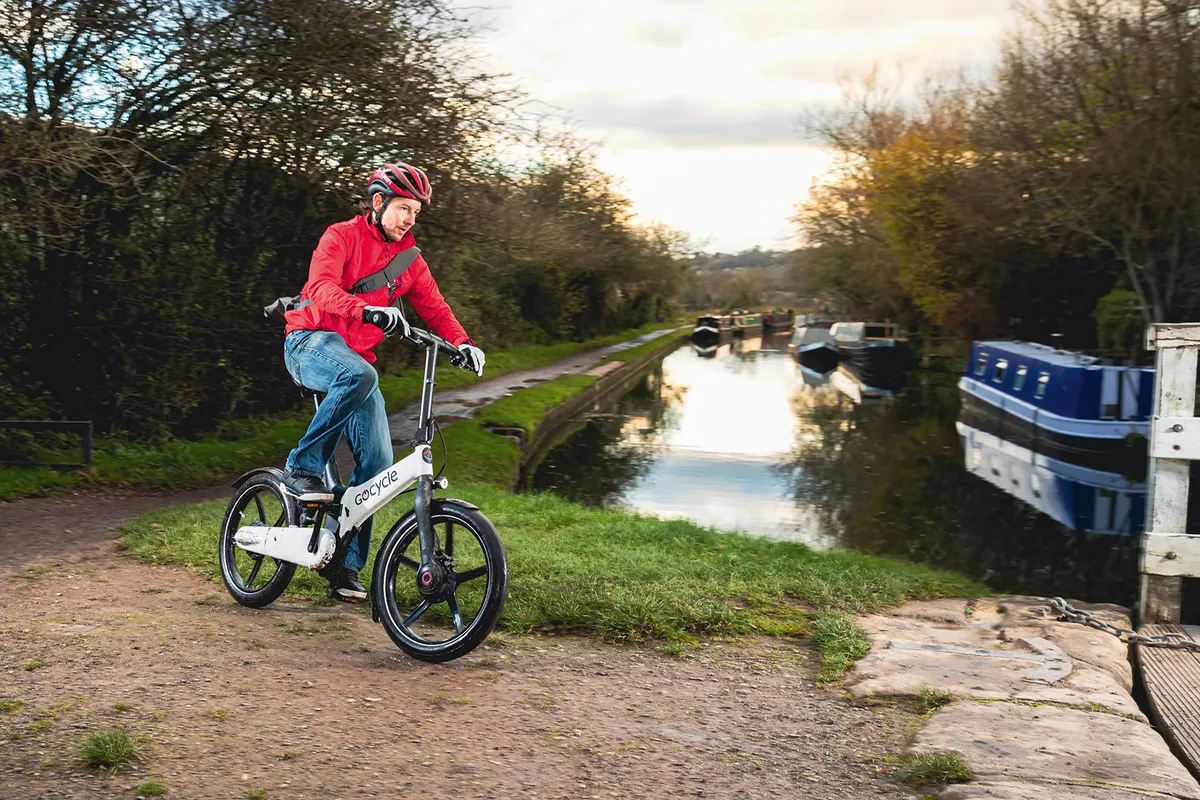
Until mid-2020, by a legislative quirk, electric bikes were treated differently in Northern Ireland than in the rest of the UK. You had to register your ebike, have a licence to use it, carry insurance and wear a motorcycle helmet, so it was treated like a moped.
Those rules were changed in May 2020, so the law in Northern Ireland is now in line with the rest of the UK and an ebike that complies with the EAPC regulations above is treated like a non-electric bicycle.
Watts and torque

We’ve already mentioned that the motor must have a continuous peak output of 250 watts for a bike to be classified as an EAPC.
Some systems have a boost button on the handlebar that you can hold down to temporarily provide more power than this, which can be useful when accelerating. In all cases, the motor must cut out at 15.5mph, even if you’re holding down the boost button.
An ebike motor's output isn't measured only in watts – its torque output and assistance levels are also important factors in its performance.
Torque is the amount of turning power the motor delivers to the wheels, determining how fast the ebike will accelerate and how steep a gradient it can tackle. An ebike’s torque output isn’t governed by legislation.
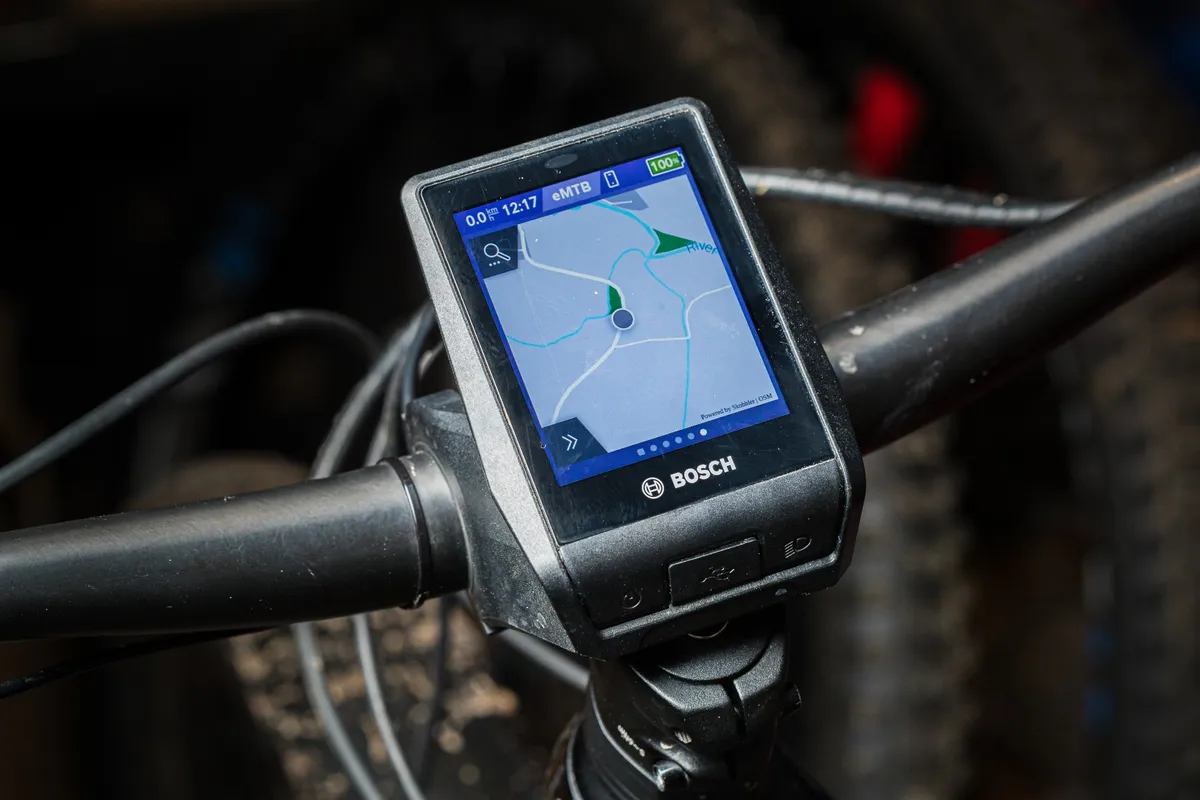
Torque figures vary significantly between electric bike motors, depending on what the system is designed for.
Flat-bar electric hybrid bikes and drop-bar road ebikes typically have torque outputs of between 40Nm and 60Nm. For example, Bosch's Active Line motor has a maximum torque of 40Nm and is designed for urban riding.
Electric mountain bikes are usually heavier and need to be able to tackle steep, loose off-road climbs. As a result, they will often have much greater torque outputs, starting at around 60Nm and, in the case of Bosch's Performance Line CX motor, topping out at 85Nm.
What laws apply to non-compliant electric bikes?
There are a couple of types of electrically powered bikes that don’t fall within the legal definition of an EAPC.
Speed pedelecs
First up are electric bikes where you have to pedal but the motor’s output is more than 250 watts and assistance isn’t speed limited at 25km/h. They’re often called speed pedelecs.
An example is the range of electric bikes made by Swiss brand Stromer. Its ebike motors have power outputs of between 670 watts and 850 watts, which in turn can power its machines at up to 45km/h.
Twist-and-go
The second category is for 'twist-and-go' electric bikes. These are models where the motor input is controlled by a twist grip on the handlebar, so you don’t need to pedal to keep the bike moving.
It’s worth mentioning that these twist-and-go ‘accelerators’ are different from the controllers often found on the handlebars of compliant EAPCs, which enable you to choose between assistance levels.
In the case of both speed pedelecs and twist-and-go bikes, these machines are treated by UK law like petrol-powered mopeds.
That means they must be taxed and insured, you must have a licence and you need to wear a motorcycle-style helmet to ride them. Like mopeds, they can only be ridden on roads or unrestricted byways.
EU laws
The laws covering electric bikes in EU countries follow the same pattern as in the UK, because they were set out at EU level when the UK was still in the EU. There's exactly the same assistance limit of 25kph and the same rules on power output of 250 watts maximum continuous power. Speed pedelecs are treated similarly too.
What are the laws on electric bikes in the USA?
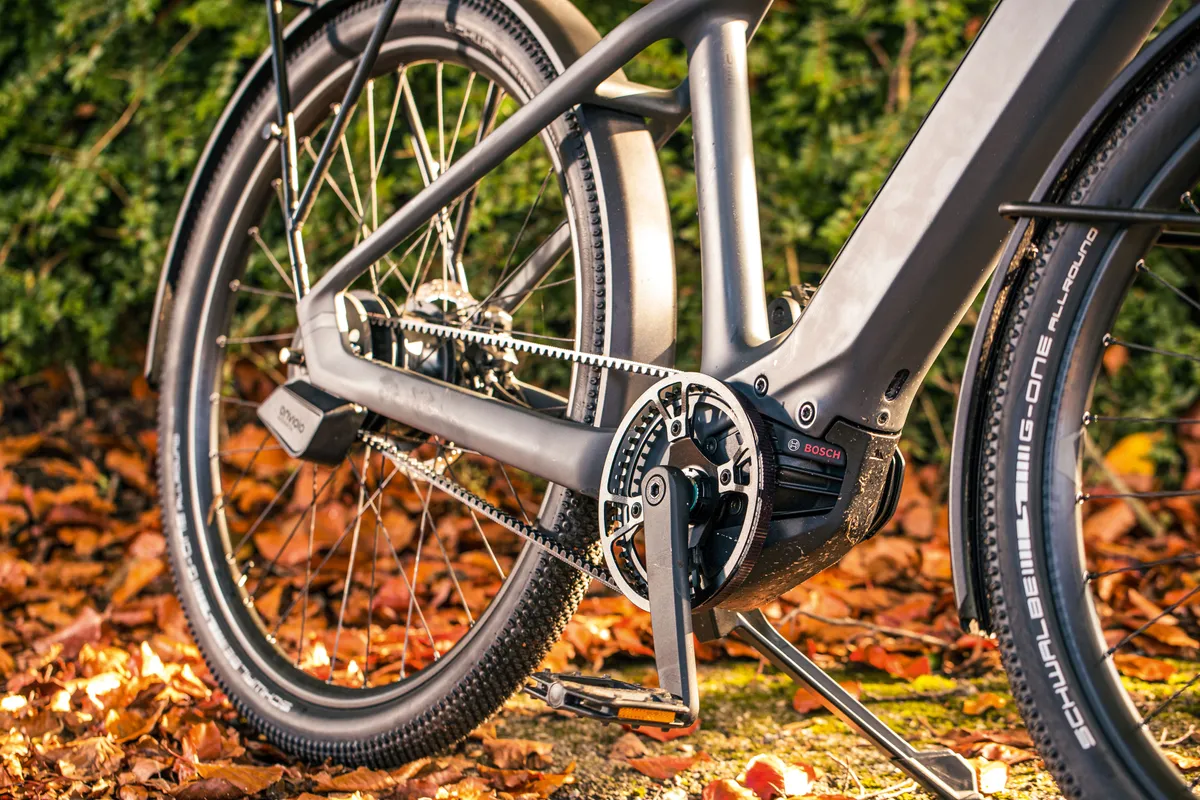
In the United States, federal law (the Consumer Product Safety Act, to be specific) defines a 'low-speed electric bicycle' as a two- or three-wheeled vehicle, with a maximum motor output of 750 watts and assistance limited to 20mph.
An ebike that complies with these regulations is treated by federal law in the same way as a non-electric bicycle.
However, there are significant differences at state level as to how electric bikes are classified and, consequently, how they may be used. That may include regulations on requiring a licence, wearing a helmet and insurance.
There are also differences at state level in the minimum legal age to ride an ebike, maximum speed and maximum power output.
In short, check the legislation in the state where you plan to ride.
Many states also follow a tiered system, whereby electric bikes are defined by three classes. The 750-watt motor limit and 20mph assistance limit we’ve outlined above apply broadly to Class 1 ebikes, but Class 2 or 3 ebikes may provide assistance up to higher speeds or use a twist-and-go system.
Once again, different laws may apply from one state to another, so check your local legislation.
What are the laws on electric bikes in Australia?
In Australia, electric bikes are classified into two categories. Starting with the second category, the regulations are broadly similar to those in the UK and Europe, with a maximum speed of 25kph and a maximum power output of 250 watts.
These bikes can also have a throttle that cuts out at 6kph, acting as a walk mode to help move the ebike around when dismounted. Walk mode is a common feature in electric bike motors. Above 6kph, you need to pedal to keep the bike moving.
The other category is electric bikes that are throttle-operated. These too must be assistance-limited at 25kph, but their maximum continuous power output can only be 200 watts.
Regardless of the ebike category, you must wear a helmet when riding and you must have working front and rear lights.




